
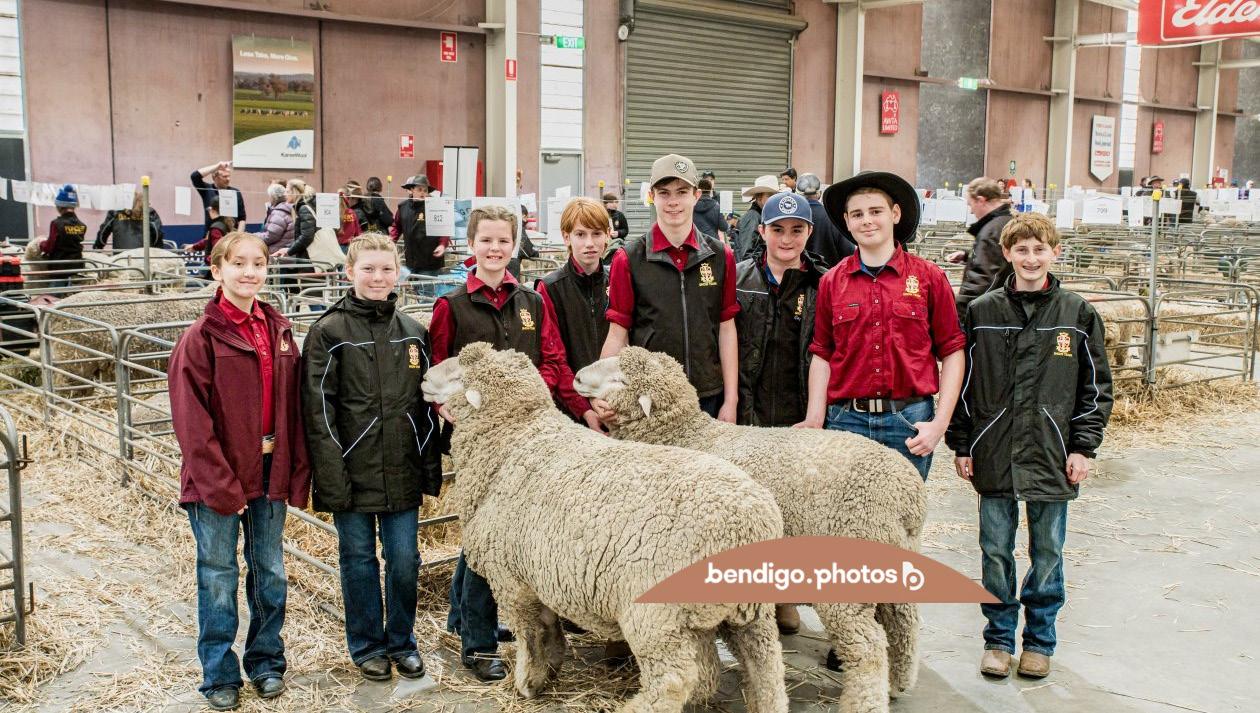



Last weekend, the Bendigo Showgrounds came alive as thousands of people poured in to celebrate the 25th anniversary of the Australian Sheep & Wool Show, the largest event of its kind in the Southern Hemisphere. From seasoned breeders to first-time visitors, crowds from across the country gathered to witness a spectacular showcase of livestock, wool, innovation, and rural pride.
For many locals, including a strong contingent from Nagambie and the wider Goulburn Valley, the event wasn’t just a weekend attraction, it was a celebration of a way of life. The show offered something for everyone: cutting-edge ag-tech displays, delicious local produce, world-class wool fashion, and of course, the country’s best rams and fleeces on proud display. Attendees were treated to a unique blend of tradition and progress, as the show seamlessly combined the heritage of sheep farming with the future of Australian agriculture.
Among the weekend’s highlights was the Central Vic Yard Dog Championships, where Nagambie’s own Darby McClaren and Seymour’s James Leahy wowed the crowds with their highly skilled working dogs. Navigating complex obstacle courses with precision and calm authority, both handlers demonstrated the incredible bond and trust forged between dog and farmer.
“It’s not just about competing; it’s about bringing out the best in your dog,” said Darby, a sentiment that echoed throughout the championships and reflected the values at the heart of the rural community.
Elsewhere, the showgrounds buzzed with activity as sheep competitions drew large crowds, many keen to admire the exceptional breeding and fleece quality on display. The Australian Fleece Competition, recognised as the world’s largest fully measured fleece competition, attracted more than 400 entries from across the country. It was a striking testament to the dedication of Australian woolgrowers and the premium quality of our nation’s fibre.
This prestigious competition not only reaffirmed Australia’s global reputation for wool excellence but also highlighted the tireless efforts of local producers whose work sustains both the industry and regional communities like ours.
More than just a livestock showcase, the Australian Sheep & Wool Show has become a cherished gathering of community, heritage, and shared passion. It’s a place where old friends reunite, new connections are forged, and the next generation of rural Australians find inspiration.
The sense of pride was unmistakable — not only in Bendigo, but in towns like Nagambie, where sheep farming is woven into the fabric of daily life. For communities like ours, events like the Australian Sheep & Wool Show are more than just exhibitions; they’re powerful reminders of the strength, resilience, and enduring traditions that continue to shape and define rural Australia.
As we reflect on this year’s show, it becomes clear that we’re celebrating far more than sheep and wool, we’re honouring the people, the places, and the partnerships that sustain our rural way of life. From the paddocks to the showgrounds, it’s the enduring spirit of community, pride, and tradition that truly unites us. Here’s to the sheep, the wool, and the strong, shared legacy that continues to shape regional Australia.


The Community Voice is a community newspaper that is published by Go Nagambie every fortnight, and it is available for free. It has an average circulation of 2500 hard copies and can be found at distribution points located in Nagambie, Avenel and Seymour.
You can also access The Community Voice online by visiting www.gonagambie.com.au
Advertising and

Advertising/News Due Dates
Community Sport Due Dates
Publication Dates







The Nationals’ Member for Euroa, Annabelle Cleeland, is ramping up efforts to support small and medium-sized businesses across the region before they reach breaking point.
In recent weeks, Ms Cleeland has met with business owners in Kilmore and Euroa, with further visits planned for Seymour and Broadford. Her message is clear: early engagement is key to saving struggling local enterprises.
“I’m on a mission to meet with businesses of all sizes before they hit crisis point,” Ms Cleeland said.
“Too often, I only hear from business owners when they’ve been backed into a corner, when they’ve had to step away from the tools and walk into my office out of sheer frustration or desperation.
“I’d rather get in early and ask, what can I do now to advocate for better conditions in Victoria?”
Her proactive approach comes in response to alarming new insolvency figures, revealing a sharp rise in business failures across the state.
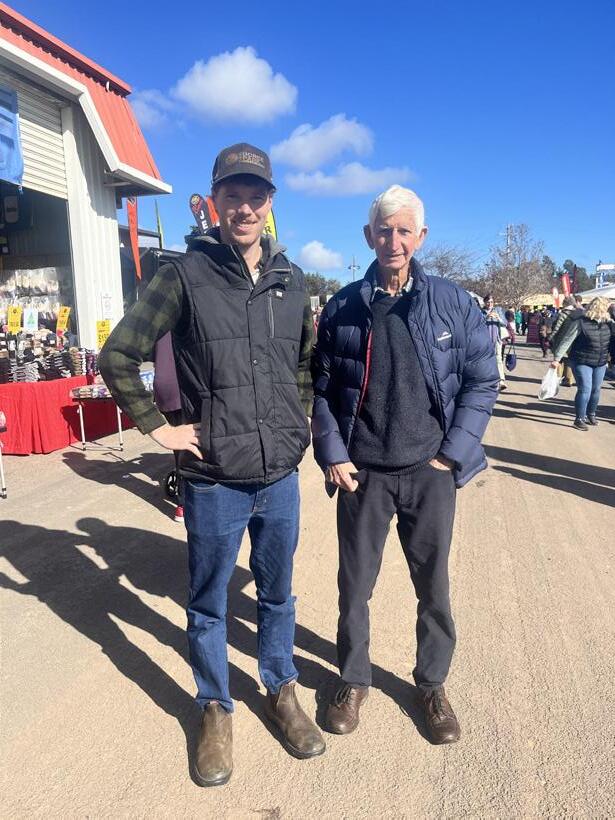


According to the latest data from the Australian Securities and Investments Commission, 4,242 Victorian companies collapsed or had a financial controller appointed during the 2024–25 financial year—up 48 per cent from 2,863 in 2023–24. The trend is even more stark when compared to 2022–23, when just 2,144 businesses went under.
“Businesses are shutting down at an alarming rate across our region,” Ms Cleeland said.
“These are towns Labor promised they would grow, but instead, our main streets are filling with ‘For Lease’ signs.
“Labor’s economic mismanagement is crushing business confidence, slashing jobs, and driving longstanding local enterprises to the wall.
“Rising taxes, soaring energy prices, a broken WorkCover system, and constant red tape are making it near impossible for many businesses to survive, let alone grow.”
Ms Cleeland said the statistics highlight the urgent need for change and called for immediate support for local enterprise.
“A 48 per cent spike in insolvencies in just one year, and nearly double in two, shows Labor has completely lost control of the Victorian economy,” she said.
“Labor can’t manage money, and now Victorian families and businesses are paying the price.”
“Small and medium-sized businesses are the backbone of our economy, particularly in regional towns.

As the proud representative of one of Victoria’s most productive farming regions, I see how hard our farmers work and the risks they face every day.
This year’s Farm Safety Week, running from July 20 to 26, carries an important message: “Second Chances – who knows how many you will get.” It is a timely reminder that safety and wellbeing must always come first.
Farming is not just a job. It is a way of life. But it is also one of the most dangerous industries in Australia. From operating machinery to handling livestock and working long hours alone, the risks are constant. Sadly, too many lives have been lost or changed due to preventable accidents.
Right now, many farmers are facing drought, financial pressure, and fatigue. These challenges make it even more important to take stock and prioritise safety.
Farm Safety Week is a chance to reflect, review practices, and check in with yourself and those around you. Please do not wait for an accident to make a change.
Every second chance is a gift. Let’s use this week to support each other and stay safe on the land.
For more information, visit http://www.farmsafe.org.au
I want to extend my congratulations to Rotary Clubs across our region as they mark another year of remarkable community service through their annual changeovers.
Thank you in particular to the Rotary Clubs of Euroa and Seymour for inviting me to be part of your recent celebrations. It was a privilege to join you in recognising the leadership, service and tireless contributions of your members.
To many, Rotary might look like a friendly face behind the BBQ at a local event - but they are so much more.
Rotary is the quiet safety net in a crisis, the helping hand when no one else is around, and the people who show up when they are needed most.
Their impact reaches far and wide, from mentoring young leaders to raising funds for important causes and supporting community projects.
Rotary truly embodies its motto of Service Above Self. The organisation reflects the very best of regional Victoria through people stepping up, not for recognition, but because they care. I want to thank the outgoing presidents across our region for their dedication and service, and congratulate the incoming presidents as they take on this important role.
I wish them every success for the year ahead.
The Warburton Redwoods Experience is set to reach new heights, with major upgrades now underway to enhance visitor facilities, supported by the Victorian Government.
Minister for Tourism, Sport and Major Events Steve Dimopoulos announced that construction has commenced on the Warburton Redwoods Experience Uplift project, backed by a $2.6 million investment from the Victorian Government. The project will deliver a range of improvements, including new bus and car parking, an accessible public toilet, a wetweather visitor shelter, a safety gate, and upgraded sections of the existing trail network.
Member for Northern Victoria Jaclyn Symes said the Redwoods are “mighty in both size and economic impact for the region,” attracting visitors who come to marvel at the majestic, towering forest, then stay on in local hotels, fill restaurants and bars, and explore other nearby attractions. These enhancements are expected to boost visitor numbers to the Warburton region, providing significant support to the Yarra Valley and Dandenong Ranges tourism sector. In 2024 alone, this region welcomed 5.6 million visitors who stayed 2.3 million nights.
It’s easy to see why the area remains one of Victoria’s most popular tourist destinations. As Symes said, “Whether you’re into wine-tasting and tasting menus, or nature and recreation is more your thing, there’s something for everyone to enjoy.” Known to many as the Warburton Redwoods, the Cement Creek Redwood Forest is part of the Yarra Ranges National Park and features Californian Redwoods that can soar up to 115 metres — the tallest trees in the world — and live for more than 2,000 years.
Just 90 minutes from Melbourne, the Yarra Ranges National Park offers something for every nature lover, from hiking and cycling to scenic drives, wildlife viewing, fishing, camping, and even cross-country skiing and tobogganing in winter.
In the year to December 2024, visitor spending in the Yarra Valley and Dandenong Ranges grew by 11 per cent, reaching $1.09 billion — contributing to a record $40 billion in total tourism expenditure across Victoria in 2024. For more information on the Warburton Redwoods or to start planning your visit, head to Parks Victoria.
Following the success of last year’s event with over 200 artworks featured, hAr will once again highlight the talents of both emerging and established artists across a range of mediums.
The exhibition includes three prize categories for adult artists:
• First Prize
• Highly Commended
• First Nations Artist Award
Youth artists aged 12–24 will also be recognised, with three dedicated prizes supported by Mitchell Shire Council’s Youth Services Engage! Program, encouraging young creatives to share their perspectives and artistic voices.
In addition, visitors will have the chance to cast their vote in the People’s Choice Award, proudly sponsored by Milner’s Picture Framing of Broadford. The artist whose work receives the most votes will be awarded a $150 Milner’s gift voucher.
A feature of this year’s program is a mini artistin-residence collaboration with St Mary’s College Seymour, supported by Engage! funding from the Victorian Government. This initiative offers students the chance to work alongside practicing artist, Vanessa Malandrin, deepening their creative engagement and fostering meaningful connections between schools and the broader arts community.
Mitchell Shire Mayor John Dougall said the exhibition continues to be a powerful platform for local artists to share their stories.
“hArt 25 is a celebration of the creativity, resilience and cultural richness that defines our community,” Cr Dougall said.
“We’re proud to deliver an event that not only showcases local talent but also creates opportunities for learning, connection and cultural exchange- especially through our partnership with St Mary’s College and the continued support for youth and First Nations artists.”
“I encourage everyone to come along, meet the artists, and experience the incredible work on display.”
The celebration begins with an invite-only opening night event on Friday 25 July featuring a Welcome to Country by a Taungurung Elder. Public viewing is from Saturday 26 July to Sunday 3 August, with daily opening hours from 10am to 4pm across two weekends. It will be held at Broadford Hall, 113 High Street, Broadford, with entry via the Council Chambers.
For more information, please visit www.mitchellshire. vic.gov.au/hart-of-mitchell or call 5734 6200.
Strathbogie Shire Council is inviting the community to attend a public information session to view the final Euroa Railway Precinct Masterplan and learn more about the next steps for this transformative project.
Developed through extensive community and stakeholder input, the Masterplan presents a clear, staged vision for revitalising the Euroa railway precinct. The plan aims to deliver improved connectivity, enhanced public spaces, greater amenity, and new opportunities for local business, tourism, and community gathering.
Mayor Claire Ewart-Kennedy said the Masterplan embodies the community’s aspirations and represents a major opportunity for Euroa to benefit from the broader Inland Rail development. She described it as “a transformational project for Euroa,” adding that “it’s not just about rail – it’s about reimagining the heart of our town.” Mayor Ewart-Kennedy emphasised that the Masterplan provides a crucial blueprint to secure State and Federal investment to bring this vision to life, and highlighted the importance of community involvement, saying “we want our community to come along on the journey.”
Encouraging residents to engage with the plan, Mayor Ewart-Kennedy said, “I encourage everyone to come along, see the final Masterplan, ask questions, and learn how we’re advocating for Euroa’s future.”
Two information sessions will be held on 28 July at 2:00 pm and 5:30 pm at the Euroa Conference Room. Community members are encouraged to register their attendance online at share.strathbogie.vic.gov.au.
The Masterplan builds on the Euroa Township Strategy 2020 and aligns with key funding opportunities, including the Federal Government’s Regional Precincts and Partnerships Program and the State Government’s Investment Fast Track Fund.
For more information, visit: www.strathbogie.vic.gov.au
The Nationals have vowed to oppose controversial new legislation introduced by the Allan Labor Government that would give government officials and energy companies the power to access private farmland without landholder consent.
The proposed National Electricity (Victoria) Amendment (VicGrid Stage 2 Reform) Bill would give VicGrid and authorised officers sweeping new powers, including the ability to cut locks, break gates, and issue fines for resistance.
“The Nationals will oppose Labor’s shocking new legislation that gives government officials and energy companies the power to break onto your private farmland without permission,” said Member for Euroa, Annabelle Cleeland.
Landholders who obstruct access could face fines of up to $12,210 under the Bill, while those who refuse to provide ID or proof of ownership may be penalised more than $4,000. Interfering with notices of entry could result in fines exceeding $1,200, and corporations could be fined up to $49,000.
“This is an extraordinary overreach from a
government that has lost control of their energy rollout, and once again it is hardworking farmers and regional families who will bear the brunt of their reckless decisions,” Ms Cleeland said.
“Under this Bill authorised officers can cut locks, break gates, and force their way onto your property all in the name of building transmission lines for Labor’s chaotic renewables plan.”
Ms Cleeland raised concerns that the legislation prioritises energy companies over critical issues such as property rights, biosecurity, and liability.
“The lack of trust between Labor and regional communities continues to grow,” she said.
“Communities in Colbinabbin, Stanhope, and Girgarre are already feeling the pressure with major projects flagged without genuine consultation.
“People are rightly worried about losing farmland, biosecurity risks, disrupted livelihoods, and long-term damage to farming communities.”
She also criticised the timing of the legislation, saying it adds pressure to regional Victorians already grappling with difficult seasonal conditions.
“Instead of backing regional Victorians during one of the toughest seasons, this government is threatening them with fines and bulldozing their
rights.”
Ms Cleeland confirmed that The Nationals are committed to fighting the Bill and pledged to work toward repealing any laws that infringe on landholders’ rights.
“We stand with you and will fight hard to stop this Bill from becoming law.”

As cycling and scootering grow in popularity across our communities, the issue of safety on footpaths has become increasingly important. In Victoria, the rules and risks associated with riding bikes and scooters on footpaths are frequently misunderstood, leading to hazardous situations for both riders and pedestrians.
The Growing Trend of Cycling and Scootering In recent years, more individuals have embraced bicycles and scooters as their preferred modes of transport. Be it for exercise, convenience, or environmental considerations, the rise in these activities is evident — unfortunately, many riders often take to the footpaths instead of the roads.
In urban and suburban areas like Nagambie, footpaths may appear to be the safest route. However, as footpaths become busier, the risk of accidents also increases.
The Legalities: What Does the Law Say?
The regulations surrounding cycling and scootering on footpaths in Victoria are straightforward, but not everyone is aware of them. According to the ‘Road Safety Road Rules 2017’ cyclists aged 12 years and younger are allowed to ride on footpaths. For those over 12, riding on the footpath is generally prohibited unless it is deemed unsafe to ride on the road.
Scooter regulations follow a similar pattern. Children under 12 can ride on footpaths, while adult riders are generally expected to stick to the road. Exceptions exist if footpath riding is necessary for safety, such as when the road is too narrow or congested.
It is vital for riders to understand that even when legally permitted, they must exercise caution and show consideration for pedestrians. Riders are required to yield to pedestrians and travel at safe speeds to mitigate the risk of collisions.
The Dangers of Cycling and Scootering on Footpaths
Although footpaths may seem like a safer option, they pose significant risks to pedestrians, especially the elderly, children, and individuals with disabilities. Sudden collisions can result in severe injuries, as cyclists and scooter riders typically travel faster than pedestrians.
Moreover, hazards such as uneven pavement and obstacles like signs, trees, and garbage bins can lead to unexpected accidents. Riders may also find themselves in precarious situations when attempting to evade pedestrians, occasionally swerving into traffic or losing control.
When There’s No Room for Bike Lanes
In smaller towns like Nagambie, limited space for dedicated bike lanes presents a considerable challenge. Many streets are narrow, and the need for parking often forces cars to park diagonally, further narrowing the available room for cyclists.
Without bike lanes, cyclists must choose between riding on the footpath compromising pedestrian safety or taking to the road, where the risk of collision with vehicles is heightened, particularly on busy streets or during low visibility. Cyclists navigating roads with parked cars face the "dooring" hazard where drivers unexpectedly open their car doors into the path of cyclists.
The situation is further complicated for scooter riders, who, due to their smaller size, can create confusion
regarding safe travel routes. Drivers should exercise extreme caution when opening car doors in areas with diagonal parking, as riders passing closely can be caught off guard, leading to serious accidents. Therefore, it is imperative for both cyclists and pedestrians to remain vigilant to ensure everyone’s safety.
What Can Be Done to Improve Safety? To maintain safe streets and footpaths for all, our community can take several positive steps:
1. Education: Local councils and community groups should raise awareness of the rules and responsibilities for cyclists and scooter riders. Schools, in particular, can incorporate road safety education into their curriculums, emphasizing the importance of following regulations and respecting pedestrians.
2. Advocating for Bike Lanes: In areas lacking dedicated bike lanes, local councils should consider innovative solutions, such as slightly narrowing car lanes or reducing parking spaces in busy areas. Implementing “sharrow” zones—marked with road markings that indicate shared cycling space—can enhance safety where space is limited.
3. Enforcement: While public education is critical, enforcement of traffic laws is equally essential. Police can conduct random checks to raise awareness and ensure compliance with rules among riders.
4. Improved Parking Regulation: Local councils should review parking regulations to facilitate a better coexistence between cyclists and pedestrians. Encouraging angled or parallel parking can free up more road space for safe travel.
By working together as a community, we can navigate the complexities of cycling and scootering on footpaths, ensuring safer environments for all. Let’s commit to improving awareness, advocating for better infrastructure, and respecting each other on our roads and footpaths.








Family Haven with Space to Grow Discover your dream family home on this expansive block offering the perfect blend of indoor comfort and outdoor lifestyle opportunities.
LIVING
• Stunning polished concrete flooring throughout
• Open-plan kitchen and living area with seamless indoor-outdoor flow through double glazed doors
• Modern kitchen featuring premium 90cm Belling gas cooktop and electric oven
• Dishwasher included for added convenience
• Reverse cycle heating and cooling for all year around comfort
• Three generous bedrooms, all with built-in robes
• Clever under-stair storage maximizing every inch of space
UPSTAIRS PARENTS' RETREAT
• Private parents' sanctuary with second living area
• Flexible space perfect as an office or additional bedroom
• Master bedroom with luxurious ensuite and walkin robe
• Escape from the hustle and bustle downstairs
This property offers the rare combination of modern family living with genuine space for hobbies, pets, and outdoor pursuits. Don't miss this opportunity to secure your family's future in this well-appointed home.
For Sale $798,000






Low Maintenance Brick Home. Discover this charming 3-bedroom home, thoughtfully designed for comfort and convenience. Warm timber floors flow seamlessly throughout, blending classic appeal with modern amenities.
Property Highlights:
• Split system for all year around comfort.
• The solar power installation helps reduce energy costs and environmental impact.
• The heart of the home features a well-appointed kitchen with a large built-in pantry and a premium 90cm gas oven, perfect for cooking and entertaining.

• The open-plan living areas, unified by consistent timber flooring, create a warm and inviting atmosphere.
• All three bedrooms continue the elegant timber flooring and offering practical built-in wardrobes for ample storage.
• The bathroom provides both bath and shower options, complemented by a separate toilet for added convenience.
• Shed offers valuable storage or workspace. Ready for immediate occupancy, this lowmaintenance home is an ideal choice for first-time buyers or as an investment opportunity.







dining room perfect for family meals and entertaining.
The modern kitchen complete with dishwasher, ample cupboard space, and electric cooking facilities. All three bedrooms are equipped with split system air conditioning and ceiling fans for optimal comfort, with two bedrooms featuring built-in robes for convenient storage.
The bathroom includes a relaxing bath,








Council Column Recap –July 2025
• Frost Street Underpass Petition: Council noted the receipt of a petition with 883 signatures regarding the closure of the Frost Street Underpass in Euroa. Council acknowledged the strength of community feeling and concerns around this decision. The petition has been formally received and referred to the CEO for further consideration. A future report will explore how the $350,000 Inland Rail contribution may be used, with further community input expected.
• Community Grants Awarded: Fourteen community grants totalling over $160,000 were awarded by the CEO in line with the 2025–26 Community Funding Model. These grants support projects across the Shire, from solar installations to accessibility improvements, all aimed at strengthening local communities. Congratulations to all recipients! Draft Euroa Precinct Master Plan on Exhibition: Council endorsed the draft Euroa Railway Precinct Master Plan for public feedback. The plan outlines a staged vision to revitalise the precinct, with improved public spaces, business opportunities, and connectivity. The Plan will be on display from July 16 to 13 August via Share Strathbogie and at Council offices. Two information sessions are being held on Monday July 28 at the Euroa Conference Centre.
• Road Management Plan Consultation Open: The draft Road Management Plan 2025–2029 was also endorsed for public consultation at last night’s meeting. The plan guides how Council maintains local roads and footpaths, with clearer classifications, new response times, and updated inspection standards. Public submissions are open from 21 July for 28 days.
• $14.3M Capital Works Program
Approved: Council approved its 2025–26 Capital Works Program, investing over $14 million in local infrastructure including roads, buildings, bridges, and open space. Key projects include Chinamans Bridge, the TAC Road Safety Project, and Alexandersons Road upgrades. Unfortunately, the Friendlies Reserve Pavilion upgrade will not proceed this year due to a funding shortfall.
• 2021-2025 Council Plan - Report on 2024-2025 Action Plan: 䓔Council noted the outcomes on the actions of the 202125 Council Plan Action Plan 2024-25 for the period 1 July 2024 to 30 June 2025. Annual Action Plans were created to implement the 2021–25 Council Plan, with regular community updates provided. This is the final update for the period ending 30 June 2025. The final update can be found on Council’s website.
Please note that our Transfer Stations will be opening slightly later than usual on Thursday, July 24.
Adjusted Opening Hours:
• Violet Town: 9.30 AM – 11.00 AM
• Euroa: 9.30 AM – 12.00 PM
• Nagambie: 9.45 AM – 12.00 PM Avenel, Ruffy, and Graytown Transfer Stations will remain closed as per their usual schedule.
Thank you for your understanding.
Euroa’s
draft Euroa Precinct Masterplan Now Available
Over the past few years, our community has shared ideas and priorities for how the Euroa Railway Precinct can be improved and reimagined. Now, we’re excited to share the draft Masterplan – and invite you to a public information session to learn more.
The Masterplan outlines a clear vision to revitalise the area around the station precinct, improving public infrastructure, safety, green spaces and access for locals and visitors alike. It builds on the Euroa Township Strategy 2020 and reflects feedback from earlier consultation, and key stakeholders.
With Inland Rail works creating a once-in-ageneration opportunity, the Masterplan, once adopted will enable Council to advocate for funding to implement the Masterplan through Federal and State programs.
The public information session will give you a chance to see the draft Masterplan, ask questions, find out how to provide feedback and hear how Council is working to turn the vision into action.
Information Session Details: 28 July 2025, 2:00pm or 5:30pm (please nominate your preferred time) Euroa conference room.
Register to attend or provide feedback via: www.share.strathbogie.vic.gov.au/euroarailway-precinct-masterplan
Strathbogie Shire Council is inviting residents to have their say on two important plans that influence everyday life in our towns and communities
Local Law No. 2 – Community Amenity Domestic Animal Management Plan (DAMP)
These documents help guide how we manage public spaces, protect neighbourhood amenity, and care for our pets and animals. From fire pits and dumped rubbish to barking dogs and roaming cats, your feedback matters.
Whether you’re a pet owner, a farmer, a business operator, or a local resident passionate about keeping your community clean and safe, we want to hear from you.
Community consultation is open from 9 July to 1 August 2025.
As part of this process, we’re hosting a series of pop-up sessions across the Shire, where you can chat with our Local Laws team, ask questions, and share your thoughts on what matters most in your community.
Upcoming Pop-Up Sessions
Wednesday 23 July 2025
• 10:00 am – Nagambie Visitor Information Centre, 293 High St, Nagambie
• 12:30 pm – Daily Dose Avenel, 2 Queen St, Avenel
• 3:00 pm – Longwood Pub Paddock, Down St, Longwood
Wednesday 30 July 2025
• 10:00 am – Burton’s IGA Euroa, 75 Binney St, Euroa
• 1:00 pm – VT Community Complex, 35 Cowslip St, Violet Town
Other ways to provide feedback:
• Complete a short online survey: share. strathbogie.vic.gov.au/community-local-lawsreview
• Pick up a printed feedback form at Council offices or libraries.
Let’s work together to shape a safer, cleaner, and more connected Strathbogie Shire.
Every landholder plays a role in protecting Victoria’s waterways—and the Environment Protection Authority (EPA) is helping make that responsibility clearer through practical guidance for grazing and livestock management.
Uncontrolled or poorly managed grazing near rivers, creeks, estuaries, and lakes can lead to serious water quality issues. This includes erosion, sedimentation, nutrient overload, and the spread of pathogens— especially when livestock have direct access to riparian areas or when land is overgrazed during high-risk periods such as winter or drought.
Under Victoria’s Environment Protection Act 2017, all landholders must comply with the general environmental duty (GED), which requires people to minimise the risk of harm to human health and the environment as far as reasonably practicable.
This duty applies whether your property borders a waterway, contains run-off paths that affect nearby waterways, or you manage Crown water frontages under licence conditions.
• Overgrazing or unrestricted grazing in riparian zones
• Allowing direct livestock access to waterways
• Feeding or supplementing stock near waterways
Soil loss, manure runoff, and effluent near drainage points
• Access by young stock and lactating animals to riparian areas
EPA Victoria recommends a suite of practical control measures that can be tailored to suit your property:
• Fencing riparian areas to prevent unrestricted stock access, especially in erosion-prone, lowlying or poorly vegetated zones.
Revegetating riverbanks—ideally with native plants—at least 10–30 metres from the bank, depending on slope.
• Providing off-stream watering points to discourage stock from entering waterways.
Excluding calves and lambs with mothers from sensitive riparian areas until they are weaned (typically 3–4 months).
Monitoring and adjusting stocking rates based on pasture condition and avoiding grazing during waterlogged or drought periods.
Managing nutrient application carefully—only fertilise after testing soil, and avoid applications ahead of rain or irrigation events.
Maintaining laneways and unsealed roads to minimise erosion and run-off into water bodies.
The EPA encourages all landholders to use a four-step risk management process:
Identify hazards – What activities could harm water quality?
Assess the risks – How likely is harm to occur, and what could the impact be?
Implement controls – What actions will reduce or eliminate these risks?
Check controls – Are your measures working effectively?
Support and funding opportunities may be available through your local Catchment Management Authority (CMA). Contact them for advice tailored to your region and to explore project eligibility.
For more information, including access to the full guidance and tools for risk assessment, visit: epa.vic.gov.au viccatchments.com.au water.vic.gov.au/waterways
Family violence is reaching crisis levels across regional Victoria, with alarming new data revealing steep increases in incidents across all six local government areas within the Euroa electorate.
Nationals Member for Euroa, Annabelle Cleeland, is calling for urgent intervention, highlighting that breaches of family violence orders are now either the most common or second most common criminal offence across the region. Many towns are experiencing rates more than double the state average.
According to the latest Crime Statistics Agency figures:
• Strathbogie saw a 21% increase in family violence incidents Mitchell rose by 14%
• Benalla also rose 21%
• Campaspe increased by 3%
• Greater Bendigo saw a 10% rise
• Greater Shepparton reported a staggering 31% increase
When compared with the state average:
• Benalla records 60% more family violence incidents
• Greater Shepparton: 81% more
• Mitchell: 46% more
• Campaspe: 38% more
• Greater Bendigo: 35% more
• Strathbogie remains slightly above average, but still experienced a significant rise
“These numbers are showing that our regions remain in the midst of a family violence crisis,” Ms Cleeland said.
“Despite these heartbreaking statistics, towns like Seymour and Benalla do not have dedicated physical points of contact for those experiencing family violence.
“These are towns where family violence incidents outnumber all other criminal offences combined and make up such a large percentage of the local police’s workload.
“Sadly, these same things were said last year, and the data shows the issue has only gotten worse.”
Ms Cleeland is urging the State Government to stop overlooking regional communities and deliver
immediate support.
“Improving the safety of women in our region is a priority that needs addressing urgently,” she said.
“The Premier and her Ministers can’t keep dodging responsibility. These figures are proof that Labor’s softon-crime approach is failing – and regional Victorians are the ones paying the price.”
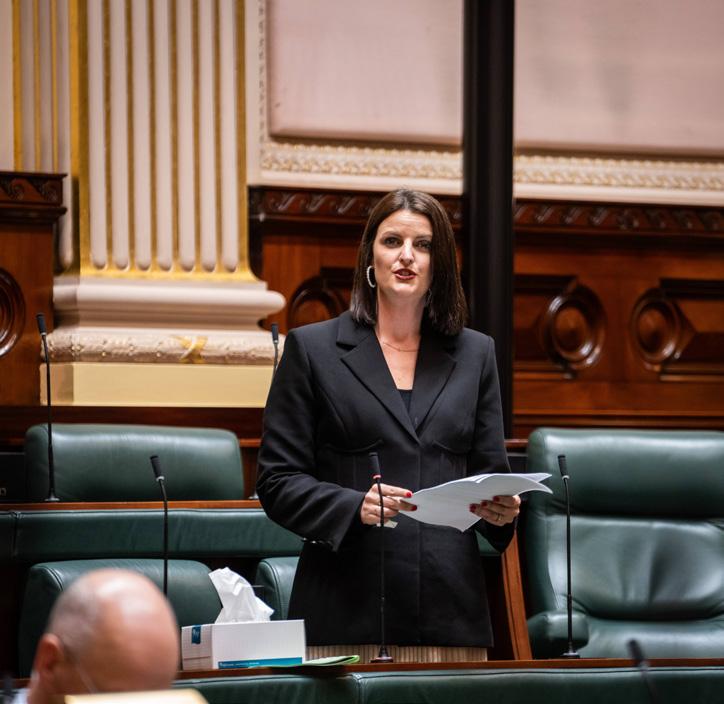
As Australia faces critical workforce shortages across key industries, National Skills Week 2025 (25–31 August) will shine a spotlight on the power of vocational education and training (VET) to transform careers, communities, and the economy.
With this year’s theme, “Explore ALL the Options!”, National Skills Week calls on school leavers, career changers, job seekers, and parents to consider VET as a first-choice pathway into high-growth, high-demand industries—from health and construction to digital tech and aviation.
“We want to challenge outdated perceptions of vocational education and show that VET is a launchpad to real, meaningful, and prosperous careers,” said National Skills Week Chair Brian Wexham.
“VET can be the ultimate game-changer, providing skills for jobs that exist now and into the future— across sectors like AI, healthcare, climate response, infrastructure, and cyber security.”
The State of the Nation: Current Skills Shortages (2025)
Australia is facing an urgent need for skilled workers across a range of sectors. Key shortages include:
• Trades & Technical Roles – Over 50% of occupations in trades are in national shortage, especially construction and food trades.
• Healthcare Professionals – Major shortages persist in regional and urban areas, impacting essential service delivery.
• Information and Communications Technology (ICT) Specialists – Nearly 70% of roles in the ICT sector are in short supply, particularly digital transformation and cybersecurity roles.
• Tourism & Hospitality Workers – Severe shortages across hotels, events, food services, and travel operations are impacting Australia’s visitor economy, with demand for skilled chefs, event managers, and front-line staff at a high.
• Engineering Experts – Engineers are in high demand across mining, infrastructure, and renewable energy.
• Forensic Psychiatrists – South Australia faces a critical shortage, affecting mental health and justice systems.
Future Jobs & Skills: What’s Ahead
Looking to the future, the skills Australia needs are rapidly evolving:
AI & Digital Transformation – Investment in AI and emerging technologies is essential to lift national productivity.
• VET-Based Degrees – New qualifications in fields like mining and metallurgy are being introduced to address shortages and offer practical alternatives to traditional university pathways.
Aviation Industry Growth – The opening of Western Sydney International Airport is projected to create 10,000 new jobs by 2031, driving demand for local training and upskilling.
National Skills Week 2025: What to Expect
Throughout the week, Australians can expect: Inspirational stories from VET graduates who have forged successful, high-impact careers.
• Events and workshops highlighting job-ready training and apprenticeship opportunities.
• A focus on inclusive education, from women in trades and Indigenous workforce participation to regional and remote access.
• Media coverage featuring success stories, data insights, and expert interviews.
A Proven Track Record of Impact
With more than three decades of history, VET in Australia continues to provide high-impact pathways for people of all ages and backgrounds. National Skills Week will celebrate:
• The elevation of vocational degrees to AQF7 status
• Government and industry collaboration on regional job creation
• Stronger alignment between training and workforce needs across sectors

Farmers across regional Victoria have been left disappointed by the Allan Labor Government’s latest drought assistance package, which offers only partial relief despite urgent recommendations for more comprehensive support.
Instead of providing the full 100 per cent council rate relief recommended by its own Drought Taskforce, the government has offered just 40 per cent—prompting frustration and criticism from local leaders.
The Nationals’ Member for Euroa, Annabelle Cleeland, said the announcement fails to meet the needs of drought-stricken communities and ignores expert advice. She stated that, “Labor’s own Drought Taskforce made it crystal clear: 100 percent rate relief is what’s needed to help farmers survive this crisis.”
Despite the clear recommendation, Cleeland pointed out that the government opted for a far less substantial offering. “Yet the Allan Government has ignored that advice and decided farmers should be content with just 40 percent off their rates. That’s not just disappointing, it’s disrespectful,” she said.
While parts of the state have experienced isolated rainfall in recent weeks, Cleeland made it clear that the drought’s impact is still being deeply felt. “A few days of rain doesn’t undo the damage caused by months of drought,” she said. “Feed is still desperately needed, and the costs are crippling. Farmers need real support, not hollow gestures and watered down policies.”
The decision to merely pause the Emergency Services Property Tax for farmers, rather than scrap it entirely, also drew strong criticism. Cleeland called the move insufficient and inequitable, saying, “Labor’s 12-month pause on the Emergency Services Tax is a token move that helps some, but continues to punish others.” She added, “This tax should be scrapped altogether. It’s unfair, it’s poorly targeted, and it’s clearly not delivering for those on the frontline.”
Cleeland also challenged Premier Allan’s claim that the tax is supported by volunteers, stating, “The Premier continues to claim this tax is supported by volunteers, but the reality on the ground is very different. Farmers and volunteers alike are calling for it to go.”
She said the announcement reinforces a broader pattern of city-centric decision-making from the state government, saying, “This is just another example of a government that doesn’t understand or respect the realities of life on the land.”
Concluding her remarks, Cleeland affirmed The Nationals’ commitment to fighting for stronger, more effective drought support. “The Nationals will continue to fight for meaningful, long-term drought support because our farming families deserve better,” she said.
As of 1 July 2025, all dogs in Mitchell Shire must be kept on a leash in public places unless they are in a designated off-leash area or fenced dog park. The new regulation—Dog Control Order No. 1—is now in force across the entire municipality.
The order is designed to improve safety in shared spaces and protect wildlife, livestock, and community members by ensuring dogs remain under control.
Key Requirements Now in Place:
• Dogs must be on a leash no longer than 1.5 metres in all public areas unless in a sign-posted off-leash zone or fenced dog park.
• Dogs must stay on-leash within 10 metres of playgrounds and are not permitted to enter fenced playground areas.
• Dogs must also be leashed during public events, including markets, sports games, and training sessions.
• The rule does not apply to working dogs actively involved in moving livestock.
Designated off-leash areas—both open spaces and fenced parks—are available across the Shire, giving dogs opportunities to exercise and socialise under effective control.
Community support for the rule change was strong, following a consultation period held from 18 November to 18 December 2024. More than 700 residents shared their views, with the majority backing clearer and more consistent leash laws to help everyone feel safe in parks, along trails, and in other public spaces.
Council formally adopted the new order at its March 2025 meeting, replacing previous location-specific regulations with a single Shire-wide rule.
To find your nearest off-leash area, visit the Dog Parks and Off-Leash Areas page on Council’s website or download the My Mitchell app and search “Near me”. Mitchell Shire Council thanks the community for their input and reminds all dog owners to continue enjoying public spaces safely, responsibly, and in line with the new rules.
Monash University
Men with high levels of belly fat are at increased risk of dementia, according to a new study by Monash University researchers of more than 17,000 individuals aged 65 to 98 years in the ASPREE Study.
Importantly the study also found that the risk for dementia is up to 38 per cent lower in those with higher lean body mass and, perhaps surprisingly, more fat body mass.
The study, published in the Journal of the American Alzheimer’s Association, found that dementia risk was 15 to 38 percent lower for individuals in higher quartiles of lean or fat body mass.
Professor Joanne Ryan, who heads the Biological Neuropsychiatry and Dementia research unit in the School of Public Health and Preventive Medicine at Monash, was a senior author on the study.
“Higher lean body mass and fat body mass in later life may be associated with better cognition, while abdominal fat could be a risk factor, particularly in men,” the study said.
Excess body weight, especially in midlife, is considered a risk factor for numerous health conditions, including diabetes and cardiovascular disease, which in turn are risk factors for dementia and cancer.
“Our findings suggest that increased body weight
in older age may confer protective effects on brain aging, regardless of body composition. However, abdominal adiposity may still be a risk factor for cognitive impairment in older individuals, particularly in men,” Professor Ryan said.
“These findings suggest that avoiding excess fat accumulation in the abdominal area and maintaining a balance between lean and fat mass may be beneficial to cognitive function in older
age. Lifestyle strategies, such as a healthy diet and regular exercise, likely play a role in protecting brain health for older individuals.”
Read full paper in the Journal of the American Alzheimer’s Association: Associations of abdominal adiposity, lean body mass, and fat body mass with dementia and cognitive change in older age. https://alz-journals.onlinelibrary.wiley. com/doi/10.1002/dad2.70135

Seymour Running Club memberships for the 2025–26 season are now on sale, offering locals a fantastic way to support one of Seymour’s fastestgrowing sporting events while enjoying a range of exclusive benefits.
The club’s flagship event, the Seymour Gift, made a spectacular return in 2024, attracting over 1,000 spectators to Kings Park for a day filled with thrilling races. Local athletes Hayden Anderson, Cooper Lubeck and Ian Porter delivered standout performances, each securing memorable wins. The event’s remarkable success was recognised at the Victorian Athletic League Awards Night, where it was named Meeting of the Year.
By purchasing a Seymour Running Club membership, supporters will receive:
• A Seymour Running Club cap (choice of traditional cap or runner's cap)
• A membership card
• Free entry to the Seymour Gift
• Discounts on hospitality tickets for the Seymour Gift
• A listing in the 2025 Seymour Gift Race Program as a Member
• Recognition on the Seymour Running Club website as a Member
Seymour Running Club President Blair Collins praised the community for its strong backing of the club’s first year and called on locals to get involved again in 2025.
“In our first year we were blown away by the support, finishing up with 125 generous Foundation Members,” Mr Collins said.
“The Seymour Gift was entirely funded by members and sponsors, so becoming a member is a great way to ensure the event continues to grow and is enjoyed by the whole community.
“The support from the community set our Gift apart last year and we’d love to see even more members get behind the event.
“Our committee is hard at work planning for the 2025 Gift on December 13.
“It promises to be another great day and we can’t wait to welcome our members to Kings Park to enjoy all the action.” Memberships can be purchased online at

Organisations across Victoria will receive vital support to capture, preserve and share the diverse stories that make up the state’s rich history.
Member for Northern Victoria Jaclyn Symes announced the recipients of the 2025 Local History Grants Program, which supports historical groups, museums, libraries and notfor-profits to safeguard community heritage for future generations.
Among this year’s recipients, Bonegilla Migrant Experience will receive $11,490 to collect and share memories of former residents of the Bonegilla Migrant Camp through a new digital platform. These stories will help connect the wider community to the important history of this significant heritage site.
In Shepparton, Kaiela Institute Limited will receive $14,326 to acquire two professionalgrade scanners to digitise a nationally significant Indigenous community collection. This initiative supports the innovative Makutu digital preservation project on Yorta Yorta Country, ensuring important cultural materials are preserved and accessible.
The Birchip RSL Sub-Branch has been granted $10,000 to bring the stories of four war veterans to life through interpretive panels at the Birchip Cenotaph, helping to honour and maintain the community’s military history.
Acting Minister for Government Services Danny Pearson said, “We’re backing the historians and local heroes bringing Victoria’s stories to life and out into the world.”
The Local History Grants Program, administered by Public Record Office Victoria, supports community activities that record, preserve and share the local, social and community history of Victoria and its people.
Victorian pet owners will soon have greater access to affordable and expanded animal care services, thanks to support from the Allan Labor Government. Member for Northern Victoria Jaclyn Symes has announced the latest recipients of Round 12 of the Animal Welfare Fund Grants program, with a total of $1.6 million awarded to not-for-profit animal care organisations across the state.
In Euroa, Equorum Ltd will receive $90,000 to construct a covered area that will include seven yards, three tie-up stalls, a small tack room, and a wash bay — boosting their capacity to care for animals in need.
Meanwhile in Mildura, Sunraysia Animal Rehousing Group Inc has secured $97,300 to provide free desexing for 150 cats and 150 dogs owned by disadvantaged and low-income earners. This vital project will help reduce the number of abandoned and homeless animals while supporting responsible pet ownership.
Pets In The Park, a national organisation that offers free preventative veterinary healthcare for pets belonging to people experiencing homelessness, will receive $131,000 to establish a new clinic in Wangaratta. This clinic will support vulnerable individuals and their companion animals across north-east Victoria.
Agriculture Minister Ros Spence said, “The Animal Welfare Fund Grants Program is making a real difference in the lives of Victorian companion animals and their owners, helping as many pets as possible into loving families.”
Overall, this round includes almost $1.14 million in funding for not-for-profit organisations, shelters, and community rescue and rehoming groups to support the rehoming of companion animals. An additional $460,000 will assist not-for-profit and community vet clinics to upgrade or expand services or establish new low-cost clinics in areas of need — a change described as a game-changer for Victorian families needing access to cheaper veterinary care.
Since 2014, the Animal Welfare Fund Grants program has awarded $14.76 million to animal care organisations, improving companion animal welfare, encouraging responsible pet ownership, and delivering better welfare outcomes across Victoria. Symes said, “We are so pleased to be able to provide this much-needed support to hardworking animal care organisations who are caring for some of our most vulnerable members of society.”
Minister Spence added, “We are proud to work with animal care organisations to secure affordable care and we look forward to seeing the benefits of this work for many years to come.”
For more information on the Animal Welfare Fund Grants Program, visit Agriculture Victoria.
Council is rolling out a new kerbside bin inspection program designed to help households recycle better, reduce contamination, and keep community waste service costs under control.
Each week, a small number of bins in selected areas will be visually inspected by Council staff. The inspections will be quick, respectful, and entirely focused on education – not enforcement.
How the program works:
• Inspectors will lift the lid for a simple visual check only – they won’t touch or remove any items.
• Bins will be tagged with a “happy” or “sad” label, depending on whether contamination is found.
Other recipients this year include the Down Syndrome Association of Victoria, which will archive its heritage collection dating back to 1978. This project will create a legacy to educate, inspire and inform all Victorians about the organisation’s long-standing impact.
Additional funded projects include newspaper digitisation, oral histories, historical signage, and the purchase of vital preservation equipment, reflecting the diverse ways communities are working to keep local stories alive.
Symes highlighted the importance of this funding, stating, “This funding means that these organisations can continue to work as the heartbeat of our community by preserving the stories, people and places that make our region so unique.”
For more information about the Local History Grants Program, visit Public Record Office Victoria.
• Each tag includes a QR code linking to Council’s A–Z Recycling Guide to help residents make better sorting choices.
Contamination in household bins can have costly consequences. When incorrect items are placed in the wrong bins, it can lead to entire truckloads being sent to landfill instead of being recycled or composted. This drives up Council’s waste processing costs –which are ultimately passed on to ratepayers.
The goals of the bin inspection program are to:
• Help residents better understand what belongs in each bin
• Support improved recycling habits
• Reduce contamination and prevent unnecessary landfill costs
By making small changes at the kerbside, every household can help divert valuable resources from landfill, cut down on waste costs, and protect our local environment.
For more details and answers to common questions, visit our Bin Inspection Program page.
Di erent types of glass have di erent melting points, so they can’t all be recycled together.
Only put glass bottles and jars from food, drink, medicine and toiletries in your glass recycling bin.
All other items made from glass (such as drinking glasses, windows, mirrors, vases, crystal, glass cooking dishes, and perfume bottles) must go your general rubbish bin.
Your small acts make a big impact.
To find out more visit our website: www.strathbogie.vic.gov.au/4-bins
Download the app: BinRight Strathbogie

































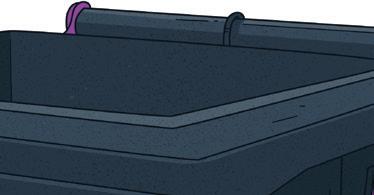



Telephone: 1800 065 993


Strathbogie Shire Council proudly welcomed eight new Australian citizens at a heartwarming ceremony held earlier this week.
The citizenship ceremony celebrated the diverse journeys of individuals and families who have chosen to make Strathbogie Shire their home. The new citizens come from across the globe, including the United Kingdom, Brazil, China, South Africa, the United States, and Sri Lanka.
Mayor Claire Ewart-Kennedy said these ceremonies are some of the most inspiring moments in the Council’s calendar, highlighting the importance of belonging and community. She explained that “citizenship ceremonies are among the most uplifting and memorable events in Council’s calendar,” reflecting the joy and significance they bring to both new citizens and the wider community.
A particularly touching moment during the ceremony came when a Strathbogie Shire Council staff member took the citizenship pledge alongside his young daughter — the youngest new citizen of the day — marking a beautiful celebration of both family and community.
Strathbogie Shire Council is honoured to share in each new citizen’s journey and proud to stand beside them as they begin this exciting new chapter of their lives. For more information, visit: www.share.strathbogie.vic.gov.au
Works to reconstruct the Hughes Creek Road Bridge in Tarcombe have been successfully completed, with the new bridge now open to traffic.
Part of Council’s 2024/25 Capital Works Program, the $429,000 project involved a full replacement of the aging bridge located approximately 7 kilometres from the Highlands Road intersection.
The reconstruction was essential to maintain the safety and functionality of this key route, which is frequently used by local residents, emergency services, and agricultural operators.
The new bridge eliminates the previous load limit, enhancing access for heavy vehicles, including farm machinery, and providing a safer, more durable crossing over Hughes Creek.
Throughout the construction period, a temporary bridge was installed to allow passenger and emergency vehicles continued access.

Works are progressing steadily on the $3.97 million expansion of the Greater Beveridge Community Centre, with the project on track for completion by December 2025.
Funded by the Victorian Government, the redevelopment will deliver two new kindergarten rooms, a minor expansion of the outdoor play space, and landscaping improvements to meet the growing needs of the Beveridge community.
The project will significantly boost local capacity for early childhood education, supporting the ongoing roll-out of funded kindergarten for three-year-olds.
Recent milestones include undercoating of newly plastered internal walls, installation of ceilings and lighting, and fitting of doors and glazing. Upcoming stages will see cabinetry installed and vinyl flooring laid.
This expansion marks a vital step in ensuring local infrastructure keeps pace with Beveridge’s rapid population growth.
For the latest construction updates, visit the project page.
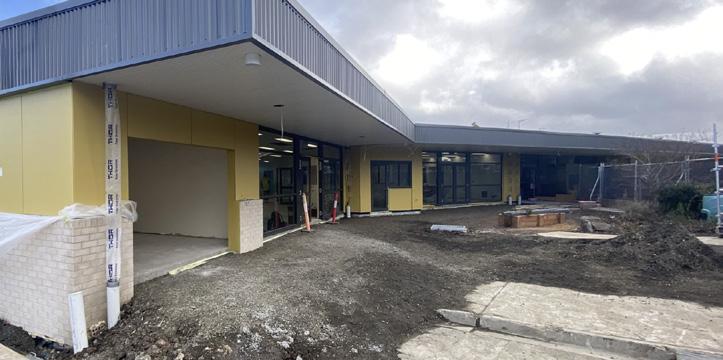

Pharmacists in rural Victorian towns are emerging as critical providers of oral healthcare advice, stepping in to fill the gap left by the absence of local dentists. According to a new La Trobe University study, pharmacists are offering oral hygiene guidance, managing dental pain inquiries, and promoting preventative care in communities where access to dental services is limited.
The study involved eleven rural pharmacists who reported taking on health responsibilities far beyond traditional dispensing roles. It called for targeted training, stronger collaboration, and clearer guidelines to help pharmacists deliver oral health advice safely and confidently.
One pharmacist summed up the situation starkly: there was “nothing in town other than us,” highlighting the crucial role pharmacies play when the nearest dental clinic is more than 20 minutes away.
Data from the 2021 National Pharmacy Survey underscores this reliance, revealing that Australians visit a community pharmacist an average of 18 times a year, compared to only 48 per cent of the population who saw a dental practitioner in the past 12 months.
Pharmacists reported offering oral health advice up to three times a week, often in response to pain-related concerns or questions
about prescriptions. Their support extends to encouraging twice-daily brushing with fluoridated toothpaste, recommending fluoridated mouthwash, providing smoking cessation advice, and discussing diet.
“Generally, people come here for dental pain,” another pharmacist said.
Professor Joseph Tucci, Pharmacy Discipline Lead at La Trobe’s Rural Health School, acknowledged that pharmacists are eager to support their communities’ oral health but face significant challenges.
“In regions where dentists are absent, pharmacists are often the first and only line of healthcare,” Professor Tucci said.
“With structured support, they can play a more confident and collaborative role in preventing and addressing oral health issues.”
Despite their willingness, few pharmacists felt equipped to conduct oral examinations. Many cited inadequate equipment, lack of privacy, and no formal training as barriers.
“There’s a need for it because dentists are a long way away but, being a small country pharmacy, we don’t have the staff to allocate time,” one pharmacist explained.
“Pharmacies don’t really have that facility and we don’t have those tools,” another said.
The pharmacists expressed strong interest in additional training and resources to help them better address oral health needs. Suggestions included online training modules that could
count towards continuing professional development.
“Where we are located, there’s no point, for instance, in having face-to-face training that’s three hours’ drive away,” one participant said. The study also revealed a lack of collaboration with dental professionals, largely because of the absence of local dentists and a lack of formal referral pathways.
“We don’t have a dentist in town, so we don’t have much of a relationship with any of the dentists in bigger towns,” one participant noted. “I don’t think it’s as good as it can be.”
Professor Santosh Tadakamadla, Dentistry and Oral Health Discipline Lead, said there is significant potential for pharmacists to take a more proactive role.
“If pharmacists were more proactive in these discussions, some oral health conditions could be largely preventable,” Professor Tadakamadla said.
“With many rural areas not having access to fluoridated water, it is important that pharmacists are educated on the benefits of fluoridated products and how to successfully incorporate this as part of their oral health advice delivery.”
The study was led by Honours student Erica Stelfox, highlighting the need for system-level support to help rural pharmacists meet growing oral health demands in their communities.
Strathbogie Shire Council is inviting residents to share their thoughts on how the Shire’s extensive road network is managed and maintained over the next four years.
At its meeting on 15 July, Council adopted the Draft 2025 Road Management Plan for public consultation. The plan sets out how Council will maintain its significant road network, which includes around 748 km of sealed roads and more than 1,465 km of unsealed roads.
Strathbogie Shire Council Mayor, Claire EwartKennedy, said the plan is a vital document for the community, as it guides how Council looks after these critical assets. “We know the upkeep of our roads is essential to our community,” Mayor Ewart-Kennedy said. “With about 748 km of sealed roads and more than 1,465 km of unsealed
roads – it’s a tough job.”
The Draft Road Management Plan describes the road assets within road reserves for which Council is responsible and outlines key areas of responsibility, including public roads, bridges and major culverts, footpaths, as well as on-street and off-street car parks. It also sets inspection intervals and maintenance response times, ensuring that Council can show a duty of care to ratepayers while providing safe, sustainable and cost-effective maintenance.
Mayor Ewart-Kennedy said the plan provides a clear framework for managing these assets in a structured and coordinated way. “This plan recognises the linkage between the management of road assets and the standard maintenance expected by our ratepayers,” she said. “It’s our duty of care, and the framework of the plan takes into account inspection, maintenance and the repair of roads for which Council is responsible.”
The plan also details how Council works with other authorities and implements systems and processes to meet compliance standards, forming an integral part of the broader Asset Management Strategy.
Community members are encouraged to view the draft plan and provide feedback between 23 July and 11:59 pm on 21 August. The draft plan is available at Council’s Customer Service Centres in Euroa and Nagambie, or online at www.share. strathbogie.vic.gov.au.
Residents can have their say by reading the draft, learning more, and submitting feedback via Council’s online engagement platform or by visiting a Customer Service Centre.
For more information, visit: www.strathbogie.vic. gov.au

The Nationals have pledged to fiercely oppose new legislation proposed by the Allan Labor Government that would allow government officials and transmission companies to enter private farmland without landholder consent—and penalise those who resist.
Under the National Electricity (Victoria) Amendment (VicGrid Stage 2 Reform) Bill, VicGrid and authorised officers would gain the power to cut locks, break gates, and access private properties without permission. Landholders who object could face hefty fines.



RACV is reminding all road users to exercise extra caution around school zones as students return to classrooms across the state.
RACV Head of Policy, James Williams said motorists need to be careful when driving and parking around schools.
"When we obey speed limits and exercise patience and caution, we are role-modelling road safety behaviours."
According to the Transport Accident Commission (TAC), approximately seven children aged 0-15 die each year on Victorian roads. Children are particularly vulnerable around roads due to their reduced visibility, limited ability to judge speed and distance, and tendency to act impulsively.
RACV is highlighting the following road rules to prioritise safety around schools:
School speed zones
• Most Victorian schools have designated speed zones reducing limits to 40km/h where regular limits are below 80km/h, and to 60km/h where regular limits are 80km/h or higher
• Time-based school zones typically operate 8:00-9:30am and 2:30-4:00pm on weekdays during school terms
• Research shows that pedestrians hit by a vehicle travelling at 40km/h have significantly higher survival rates than those hit at 50 or 60km/h
• Motorists face fines and demerit points for failing to comply with posted limits
Children's crossings
• Recognisable by bright orange 'Children Crossing' flags
• All vehicles must stop for pedestrians waiting to cross when flags are displayed
• Drivers must remain stopped until crossing is completely clear
• Crossing supervisors may be present but the rules apply regardless
Parking and drop-off areas
• Parents should familiarise themselves with school-specific parking arrangements
• 'Kiss and Go' zones allow for quick drop-offs without leaving vehicles (two-minute maximum)
• Parking is prohibited within 20 meters before and 10 meters after school crossings
• Double parking, stopping in bus zones, or in 'No Stopping' areas is illegal
Safety tips for walking and cycling
• RACV notes a concerning decline in active transportation to schools. According to victoriawalks.com.au only about 15 per cent of Australian students regularly walk or ride to school today, compared to 45 per cent in 1974.
• For families choosing active transportation, RACV recommends:
• Supervising primary-aged children until around age 12.
• Holding hands with children under five near any roadway.
• Teaching children to remain alert and avoid distractions.
• Meeting children on the school side of the road during pick-up.
• Ensuring all cyclists wear helmets (children under 12 and accompanying adults may ride on footpaths).
• Ensuring children under the age of 16 do not ride on e-scooters outside of private property.
"School zones exist for the safety of our youngest and most
vulnerable road users," adds Williams.
"Everyone shares responsibility for creating a safe environment around schools, whether you're a parent, teacher, or simply a passing motorist."
“Congestion at school drop off is a point of frustration for many parents and carers. It is worth considering parking a block away and walking the last part of the journey to the school. It’s a great way to avoid congestion while increasing active travel.”
Over the last 12 months RACV has educated 15,220 students from more than 140 schools as part of its RACV Safety Squad program. The program focuses on safety tips for pedestrians, passengers and bike-riders. Schools that aim to empower students to stay safe both at home and on the roads can learn more through racv.com.au

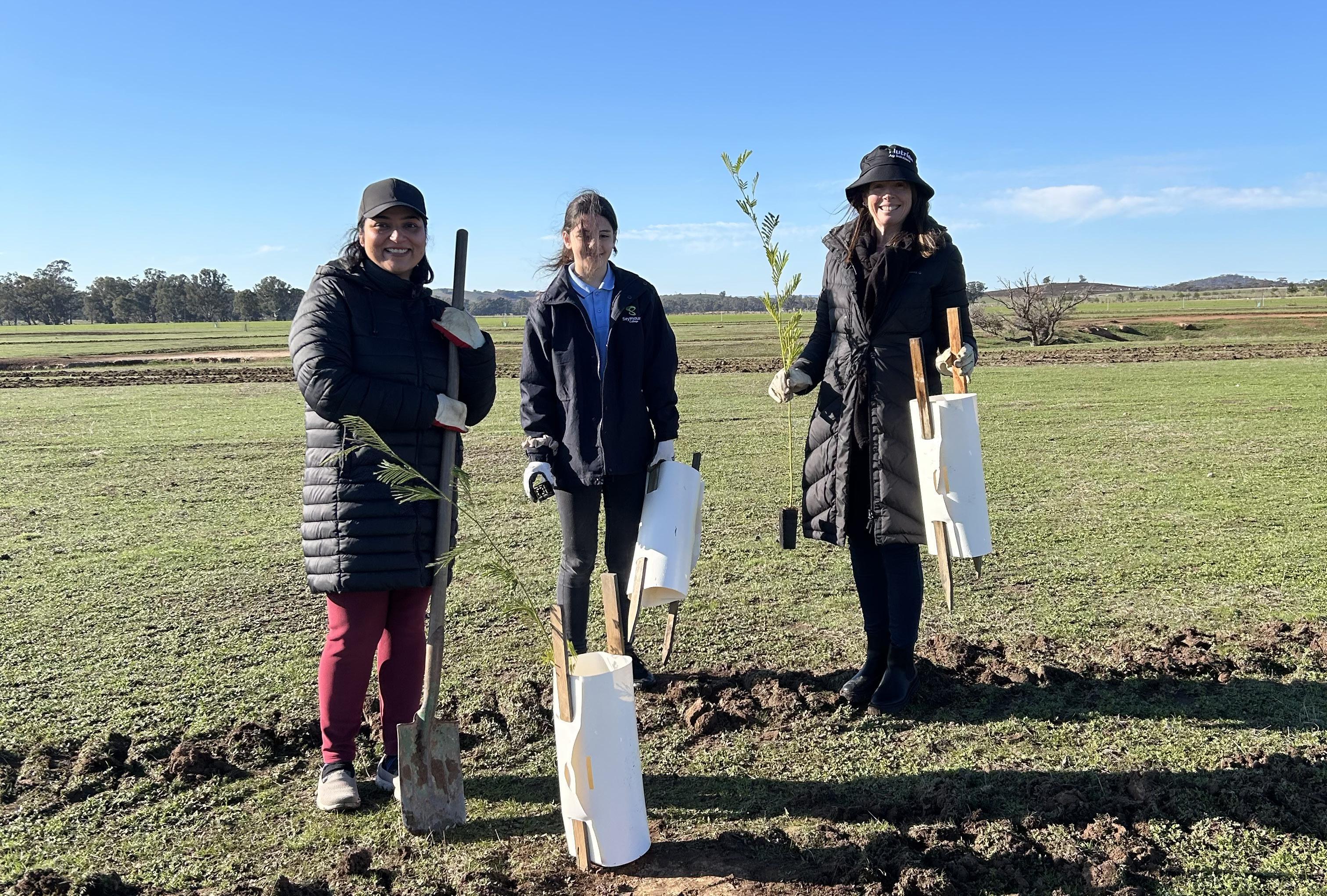
Students from Seymour College had a hands-on lesson in agriculture, sustainability and the circular economy during a recent visit to Melrose Park Fine Wool Merino Stud, a renowned Wirrate property in the heart of Victoria’s wool-growing country.
The excursion offered students a rare opportunity to experience the lifecycle of sustainable fine wool production — from paddock to product — and to better understand the environmental innovations shaping the future of agriculture. Highlights of the visit included:
Tree planting to support biodiversity and carbon capture,Cuddles with working kelpies, the beloved canine co-workers of the wool industry,a
guided tour through theworking shearing shed, learning about fleece grading and wool classing, and a real-life look at the circular economy, with composted green waste from metropolitan Melbourne being repurposed to enrich pasture soils and sequester carbon.
Agriculture teacher Amanda McClaren said the excursion reinforced classroom learning with real-world application.
“Our students not only learned about livestock management and environmental stewardship — they saw how circular systems, like composting city green waste, are being used to regenerate soils, increase productivity, and address climate challenges,” they said.
The visit was made possible through strong connections between Seymour College’s agriculture program and leading local producers


Local community groups across the region are being encouraged to apply for the 2025 Nutrien Ag Solutions Community Grants Program, with up to $5,000 available to support projects that make a real difference in rural and regional areas.
The Nationals’ Member for Euroa, Annabelle Cleeland, is urging not-for-profit organisations to seize the opportunity to access funding that could help bring important local projects to life.
Delivered in partnership with the Foundation for Rural & Regional Renewal (FRRR), the program is designed to assist community-led, smallscale initiatives in remote, rural, and regional communities.
Cleeland said the grants present a fantastic opportunity for groups across the region to get meaningful community projects off the ground.
“It’s often local volunteers and grassroots organisations who know exactly what their communities need, and this program helps turn those ideas into reality,” she said.
Highlighting the tangible impact of the program, Cleeland pointed to recent local success stories.
committed to education and sustainability.
“Getting our students out on the land helps them see the big picture — from animal care to climate action,” said Mrs. McClaren. “It was a day of muddy boots, happy dogs, and inspired young minds.”
“Farm visits, like this visit to Melrose Park, allow students to learn more about career opportunities in agriculture. Seymour College are very grateful for the opportunity to visit local producers and experience our local agricultural sector”
“Charles Heale and the team at Melrose Park were generous hosts, sharing their passion for the Merino breed and the innovations helping Australian agriculture grow more resilient — one paddock at a time.”
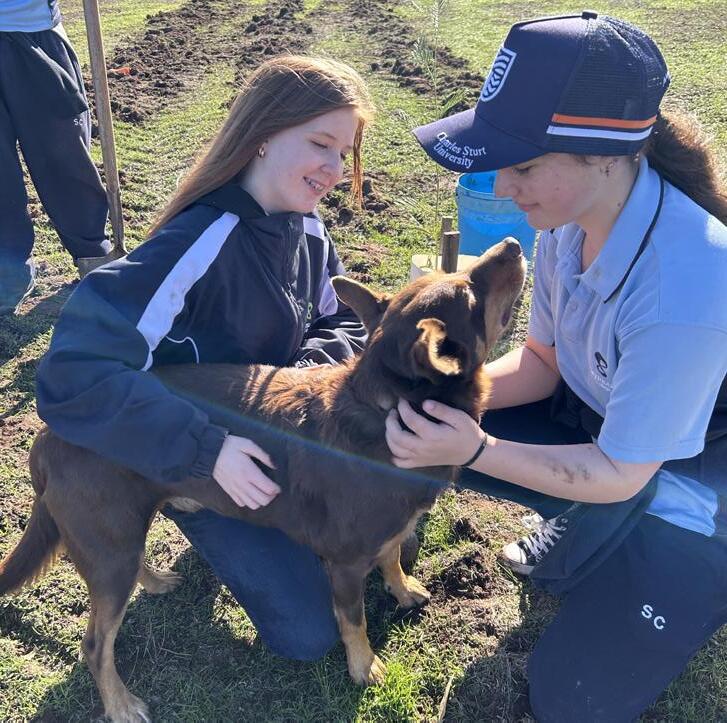

“Previous recipients like the Kilmore Men’s Shed and community radio programs in Seymour and Broadford show just how valuable this funding can be for groups in our region,” she explained.
She also emphasised the importance of private sector involvement in supporting local projects.
“It’s incredibly pleasing to see Nutrien step in where government support too often falls short – backing local, community-led projects that improve lives and strengthen regional towns.”
Since its inception in 2021, the Nutrien Ag Solutions Community Grants Program has supported more than 200 initiatives, including community facility upgrades, new equipment purchases, inclusive local events, and improvements to vital services.
Applications for the 2025 round close on Thursday 7 August, with successful recipients to be announced in October.
To help guide applicants through the process, a free online webinar will be held on Tuesday 15 July from 12:30 pm to 1:30 pm AEST.
More information and access to the application portal is available at:
www.nutrienagsolutions.com.au/nutrien-agsolutions-community-grants-program
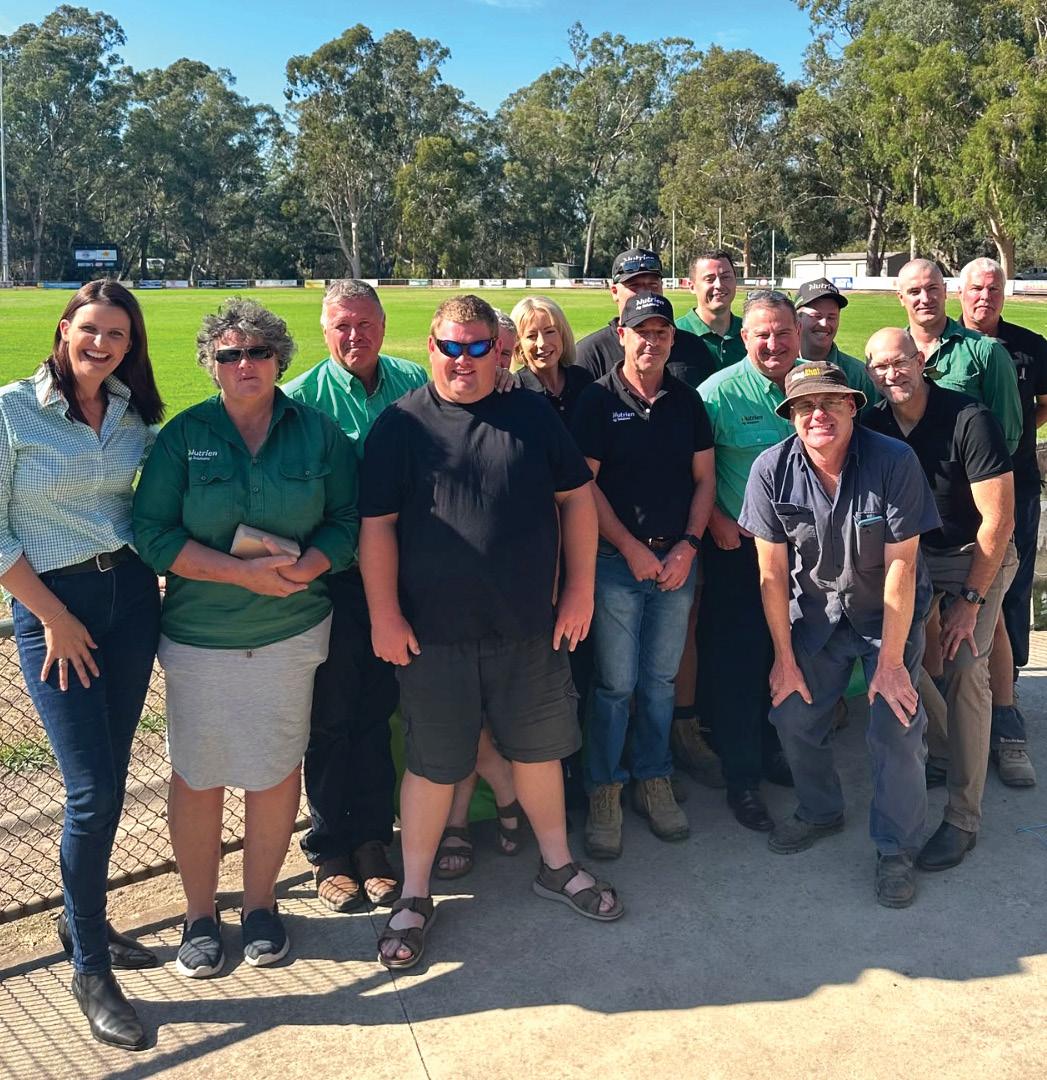
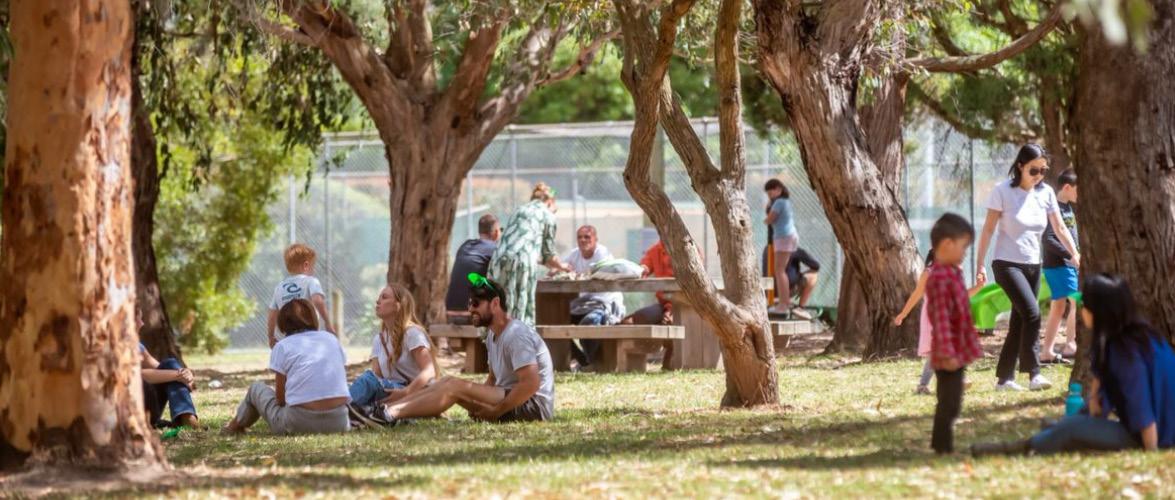
Strathbogie Shire Council has proudly announced the successful recipients of its 2025–26 Community Strengthening and Sustainability Grants Program, awarding a total of $161,724 in funding to 14 inspiring local projects.
The grants were awarded under delegation by the Chief Executive Officer, in line with Council’s adopted 2025–26 Community Funding Model endorsed in April this year. This model empowers Council to support grassroots initiatives that strengthen communities, enhance liveability, and deliver long-term benefits across the Shire.
Applications opened on 16 April and closed on 21 May 2025, with 23 applications submitted across both categories requesting more than $236,000 in funding. Following a thorough assessment process, 14 projects were selected, fully allocating the available funding. Successful projects range from solar and battery upgrades and sporting facility improvements to arts, heritage, and community development initiatives.
Mayor Claire Ewart-Kennedy congratulated the recipients and acknowledged all applicants for their dedication to building stronger, more connected communities.
“This program is about backing the great ideas, energy and commitment that already exist in our towns and communities,” Cr Ewart-Kennedy said. “From investing in inclusive sporting spaces to supporting sustainability and local heritage, these grants reflect the diverse and inspiring work happening across Strathbogie Shire.”
Among the recipients are the Euroa Arboretum, which will develop a new master plan; the Euroa Historical and Genealogical Society, receiving support for solar installation and pathway extensions; and the Strathbogie Recreation Reserve, which will undertake electrical upgrades to support new BBQ and recreation facilities.
The funding also benefits groups in Avenel, Violet Town, Ruffy, and Nagambie, reflecting Council’s commitment to ensuring equitable support across the entire Shire.
The Community Strengthening and Sustainability Grants are part of Council’s ongoing commitment to empower local people and organisations to deliver grassroots projects that build connection, resilience, and pride of place.
For more information about the Community Funding, visit www.strathbogie.vic.gov.au or contact Council on 1800 065 993.
The full list of grant recipients is as follows:


Strathbogie Shire Council
is proud to present In The Moment, a new solo exhibition by acclaimed local artist Kristen R MacKenzie, on show at the Artbox gallery in Longwood from until July 29, 2025.
A graduate of the Victorian College of the Arts — and one of its youngest-ever Fine Arts students at the time — Kristen brings decades of creative evolution to this deeply personal body of work. Her multidisciplinary practice spans painting, drawing, textiles, printmaking, and ceramics, with pieces held in private collections across Australia and around the world.
Deeply influenced by nature, Zen philosophy, Rumi, Feng Shui, and the spiritual force of imagination, Kristen’s art becomes a meditation on awareness and perception. Her expressive brushstrokes and emotional layering evoke a rich interplay of form, feeling, and flow.
In The Moment encourages viewers to slow down and tune in to their inner world. “These works are an invitation to explore innocence and imagination,” Kristen says. “To look between the raw edges of life’s fleeting light and experiences, and to find peace and presence in the visual image.”
Mayor Claire Ewart-Kennedy welcomed Kristen’s return to the Artbox, saying:
“It’s a pleasure to welcome Kristen back for her second exhibition. Her work continues to inspire and connect with our community, and it’s wonderful to see such strong support for local artists. Exhibitions like In the Moment help to bring people together through creativity.”
The exhibition is accessible 24 hours a day via the Artbox’s large glass windows at 60 Hill Street, Longwood. Visitors are also invited to meet the artist in person on Saturdays between 1–3pm, or by appointment by calling 0481 338 333.
To learn more about ARTBOX and future exhibitions, visit: www.strathbogie.vic.gov.au

Call for Volunteers: Join La Trobe’s Weighted Walking Study at Tahbilk Wetlands
A unique opportunity to walk your way to better health – and contribute to cutting-edge research. Who Can Take Part?
You may be eligible if you:
Are interested in improving your health and fitness Are aged 18 or older with no medical conditions preventing exercise
Engage in at least 150 minutes of moderate aerobic activity (or 75 minutes of vigorous activity) per week
Have not been participating in strength training two or more times a week in the last three months
What’s Involved?
Participants will:
Complete health and fitness assessments at La Trobe University (Bendigo campus) on three occasions Walk twice a week for two weeks (unweighted), followed by a six-week supervised weighted walking program at the Tahbilk eco-trail (approx. 6 km per walk)
Commit approximately 24 hours across an 8-week period
This is a unique opportunity for those looking to boost their fitness, support scientific research, and enjoy the beautiful natural surrounds of Nagambie’s wetland trails. This study is supported by multiple health and research organisations, and is a great chance to contribute to knowledge that could shape future fitness and rehabilitation programs.
To Register or Learn More
Contact: Nicola McKeown
School of Rural Health, La Trobe University
Email: n.mckeown@latrobe.edu.au
Phone: 0410 355 595

As part of major Inland Rail upgrade works in Broadford, the Hamilton Street bridge will be temporarily closed to allow for the safe installation of large bridge beams.
The closure will take place from 7am Sunday 27 July to 7am Tuesday 29 July, and is necessary to support construction of a new shared use path along the rail corridor. A large crane will be used to lift the beams into place.
The timing has been carefully coordinated to align with a planned rail shutdown, ensuring safe access to the bridge site directly above the train line.
The Inland Rail project, delivered by John Holland Group on behalf of the Federal Government, is undertaking significant works across Hamilton Street, Short Street, and Marchbanks Road to provide the required clearance for double-stacked freight trains.
Traffic management is currently in place across all three sites.
Travel Impacts During the Closure
A full road closure will be in place at Hamilton Street bridge during the 48-hour period.
A 12km detour via Sunday Creek Road or a 20km detour via the Hume Freeway will be available.
Road users should plan for at least 20 minutes of additional travel time, or up to 30 minutes during peak periods.
A temporary pedestrian detour will also be
available via the Broadford train station level crossing.
Inland Rail is also coordinating with local emergency services to reduce disruption to critical response operations.
Community Engagement and Information
Inland Rail staff will be available to speak with community members about the closure and ongoing works at the upcoming Mitchell Listening Tour in Broadford: Broadford Hall, 18 Murchison Street
Wednesday 2 July, 6pm – 7.30pm

The session, hosted by Mitchell Shire Council, will begin with a short presentation from Council and Inland Rail, followed by an open, expo-style format where attendees can speak one-on-one with Councillors, Council staff, and Inland Rail representatives.
Stay Informed
For more information about the Hamilton Street bridge closure or the Inland Rail works at Short Street and Marchbanks Road, you can: Visit the Inland Rail website
Call 1800 732 761
Email inlandrailvic@inlandrail.com.au
Write to: Inland Rail Pty Ltd, PO Box 217, Collins Street West VIC 8007
Attend a drop-in session: Wednesdays, 10am – 1pm at Country Soul Cafe, 1/70 High Street, Broadford


















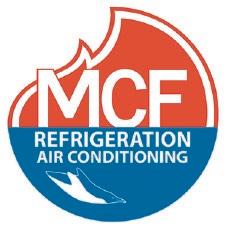








































RESULTS WEDNESDAY 9TH JULY
We had 9 players for a round of Par. The winner of all grades , the 9 hole winner and the winner of the Seymour Club Voucher was Irene Keogh.
Irene won the 18 hole competition with 32pts and the 9 hole competition with 17pts.
N/P 3rd was Annette Mills
18 hole balls down the line went to Irene 32pts, Moz Fowler with 30pts on a C/B from Bev Brown.
9 hole balls down the line went to Irene 17pts and Moz 16pts.
RESULTS WEDNESDAY 16TH JULY
There were 7 players brave enough to tackle the cold damp conditions.
Once again the overall winner was the inform Irene Keogh with 34pts.
Irene also won the 9 hole competition with 15pts and The Seymour Club Voucher.
N/P on 13th was Bev Brown.
18 hole balls down the line went to Irene 34pts.
9 hole balls down the line went to Irene 15pts and Bev with 14pts on a C/B from Cathy Lawrence.
From Friday 11 to Sunday 13 July, the 2025 Oceania U22 Teams Rowing Championships (OTRC) Victorian team held a successful training camp at Nagambie Lakes, with Central Victoria once again delivering ideal winter rowing conditions.
Throughout the Friday and Saturday sessions, the OTRC team was joined by the Australian U19 Men’s Quad, a valuable addition that enhanced the overall training experience.
The camp focused on training in fours, quads, and eights. The athlete group was diverse, including VCE students, Melbourne-based rowers, regional-based rowers, and rowers home for the holidays from their US and interstate colleges/ universities.
The camp was supported by the OTRC coaches, Paul Blanchfield and Rhett Spiller, with assistance from Tristan Krstevski, Noel Carter, Jane Robinson, and Sue Andrews.
Thanks to the hospitality of Nagambie Rowing Club, the team was accommodated upstairs in the clubrooms and enjoyed shared meals in the club's dining area.
Saturday night’s uniform presentation brought a fantastic sense of occasion, with 32 parents and supporters creating a vibrant atmosphere. Club president Pat McNamara presented the athletes with special 'Big V' bucket hats, and RV Board member Sue Andrews — also a proud Nagambie local — shared her congratulations with the group.
With just days to go before the 2025 OTRC at West Lakes, South Australia (24–27 July), the Victorian team is primed and ready to take on the rest of the nation.






Avenel Arts is rolling out the red carpet for residents of Avenel and surrounding districts with a heartwarming invitation to their “Christmas in July” Social Night. Set to be held on Saturday, July 26, at the Avenel Memorial Hall, this free, family-friendly event promises an enjoyable evening filled with connection and creativity.
In line with Avenel Arts’ mission to revitalise community life through arts, learning, and shared experiences, attendees can look forward to engaging arts and crafts suitable for all ages, delightful Christmas carols, and the beloved lantern songs performed by local school and kinder children. The evening will be capped off with the classic community potluck supper, encouraging everyone to bring a plate and join in the festive fun.
This event is part of Avenel Arts’ monthly Social Nights series, designed to create regular opportunities for locals to come together in celebration through inclusive, low-cost activities. Mark your calendars for the last Saturday of each month, with the next gatherings set for August 30, September 27, October 25, and November 29, all kicking off at
5:30 PM.
Residents looking to stay active while socialising need not look further than Avenel Memorial Hall's “Just Dance!” sessions. Held every Thursday from 5:45 PM to 6:45 PM, these lively evenings blend ballroom and barn dances featuring simple, easy-to-follow steps, making it accessible for all ages and abilities. No partner is needed, just bring your good spirits and a willingness to dance. Donations are encouraged to support ‘Avenel Arts' music and arts programs.
Avenel Arts understands the challenges of heading out on a weeknight, yet assures that the payoff comes through sharing good times with good people. So, make Thursday nights an exciting and joyful part of your week; everyone is welcome.
In exciting news, Avenel Arts has been awarded a $10,000 Community Strengthening Grant from the Strathbogie Shire Council. This funding will allow the organization to expand free and affordable creative programming for all ages through the Avenel Music and Arts Project. The project aims to:
- Acquire a variety of musical instruments to complement the Hall’s digital baby grand piano.
- Provide weekly music and dance lessons, showcasing participants' progress during the monthly Social Nights.
- Offer community workshops and school holiday programs.
- Host public performances while supporting local facilitators with a commitment to inclusivity and accessibility.
Through this initiative, Avenel Arts intends to foster creativity and social connections, thereby reducing isolation and bridging generational divides, all while establishing a thriving creative hub for Avenel and neighboring towns.
Community input is invaluable in shaping the program, and residents are encouraged to share their preferences for instruments or skills they’d like to learn. Feedback can easily be submitted using the provided QR code.
Avenel Arts would like to express its sincere gratitude to the Strathbogie Shire Council, Seymour Bunnings, Anderson’s Garden Supplies Nagambie, and their devoted community volunteers. Their generous support plays a crucial role in transforming Avenel Memorial Hall into a lively and inviting space for all.
Avenel Arts thrives on community involvement and is eager to welcome more volunteers to support various activities such as social events, creative workshops, dance classes, live performances, mentoring, and assisting with event setups and social media. No matter your skills or the time you can offer, there's a place
for you to make a meaningful impact.
For more information or to join the fun, follow Avenel Arts on Facebook and Instagram @avenelarts, or reach out via email avenelartsproject@gmail.com or by scanning the QR code below.
Together, through dance, music, and creativity, Avenel Arts is building a stronger, more connected Avenel. Don’t miss out on these vibrant community offerings.
